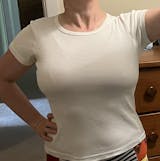
In a global first, Standards Australia has released a new technical specification that could transform how we deal with textile waste: SA TS 5399:2025 – Compostable Natural Fibre Textiles.
Australia generates around 860,000 tonnes of textile waste each year, yet only about 5 per cent is estimated to be recycled (excluding charitable donations). Initiated by The Very Good Bra, chaired by Blake Lindley, with the textile know-how of Meriel Chamberlain and the genius of Dr Chris Hurren and his team of PhDs from Deakin University, this new specification introduces a test method to determine whether a natural-fibre textile or garment can be safely composted in industrial composting facilities, in line with AS 4454:2012 – Composts, Soil Conditioners and Mulches.
A Four-Year Collaboration to Close the Loop
The new specification represents the culmination of four years of collaborative research between Deakin University and Standards Australia, me and the above committee, along with invaluable collaboration from the NSW EPA, Thomas Dewing from WormTech and Jasmine Lauer from Country Road, as well as many others who have contributed along the way.
I began investigating textile compostability after discovering during my 2022 B Corps application that no global testing methodology existed to determine whether natural-fibre textiles could safely return to the soil. In my earlier blog, “Why Can’t We Compost Textiles?” I described the frustration of learning that while my plastic-free bras could be eaten in a worm farm in 8 weeks, and were compostable at home, no industrial process existed to verify or accept them.
That inquiry evolved into a partnership with Blake Lindley of Cirq Solutions, and together we rallied support from government, industry, composters, and universities to create what has now become SA TS 5399 – a clear, science-based pathway to test and verify the compostable of natural textiles. We have to stress that there is more work to be done! As yet, no provision has been made for waste facilities to accept textile waste, but this is a start in what has turned out to be a very long process.
So long, because the consequences of getting it wrong are huge.
Why It Matters
Recycling and repurposing textiles at scale remain among the industry’s biggest challenges. This specification helps start to bridge the gap between design and disposal by:
-
Supporting safer product design: identifying dyes, finishes, and chemicals that affect compostability.
-
Reducing landfill burden: diverting natural fibres away from methane-producing landfill.
-
Building a circular textile economy: enabling brands to create products that safely return to nature.
-
Aligning with national chemical-safety priorities: helping regulators monitor and reduce hazardous imports.
-
Creating opportunities for innovation and employment: recycling and composting generate more than three times as many jobs as landfilling.
“Fabric manufacturing involves many unknown treatments and chemicals. Being able to identify upfront those most likely to be problematic allows brands to work with suppliers to design them out at the beginning, increasing the opportunity for true textile circularity,”
said Stephanie Devine, member of the PC-005 Compostable Textile Committee.
A Science-Led Step Toward Circularity
“Australia’s soils are among our most valuable natural assets,” said Blake Lindley, Chair of PC-005. “In developing this specification, we’ve taken a careful and considered approach—one that’s grounded in science and guided by a broader vision of a bio-circular economy where both human and ecological health are prioritised.”
The test method within SA TS 5399 will allow laboratories to assess compostability under controlled industrial conditions, ensuring that only materials that truly return safely to the earth can claim to be compostable.
While industrial composting of textiles will depend on local infrastructure and climate, this specification lays the groundwork for future Australian and international standards, moving toward a certifiable product framework that supports public health, environmental protection, and industry transparency.
Looking Ahead
The release of SA TS 5399 is not the end of the journey—it’s the beginning of a new era for circular design. For the first time, brands, scientists, and waste-management operators have a shared language for testing and improving compostable textiles.
As the fashion industry confronts the environmental cost of clothing production, this specification offers a credible path forward—one that honours the biology of the planet as much as the creativity of design.
SA TS 5399:2025 – Compostable Natural Fibre Textiles is now available through the Standards Australia Store and its distribution partners.
For more information, contact:
Communications Department
communications@standards.org.au





